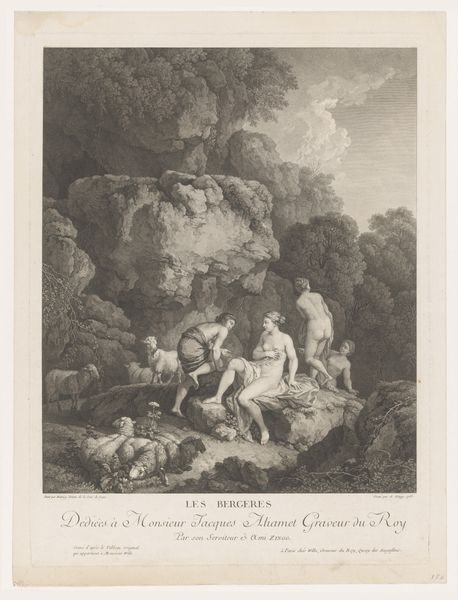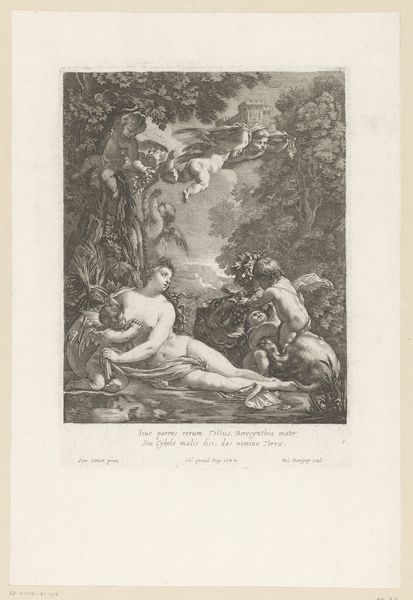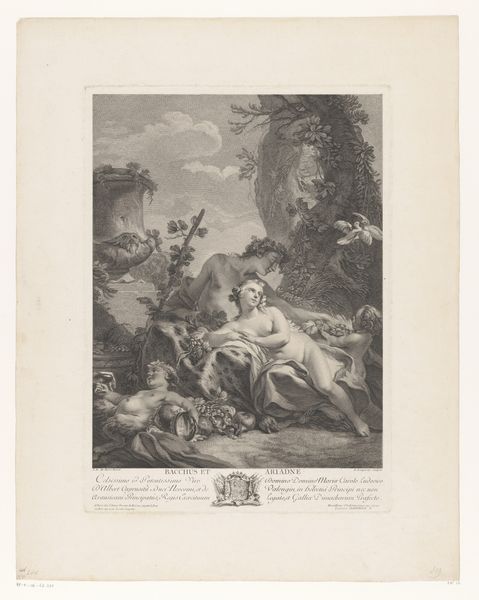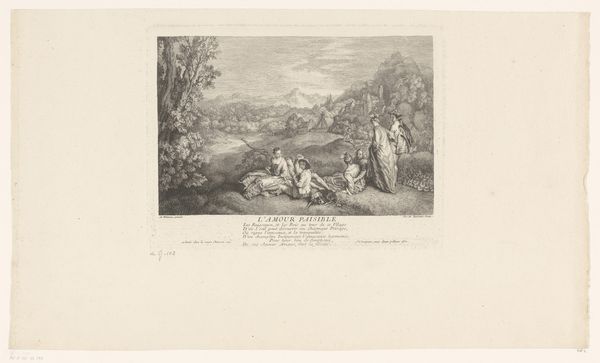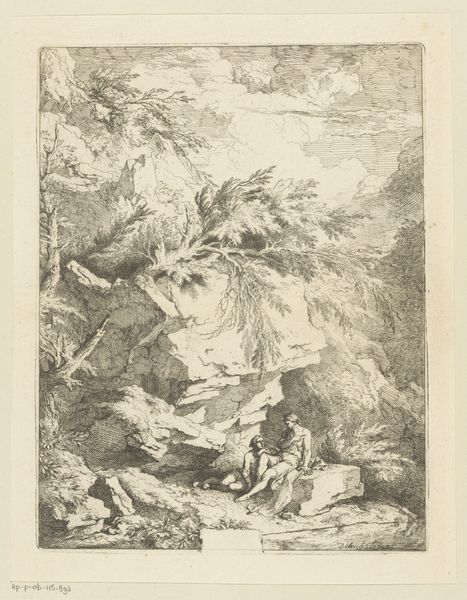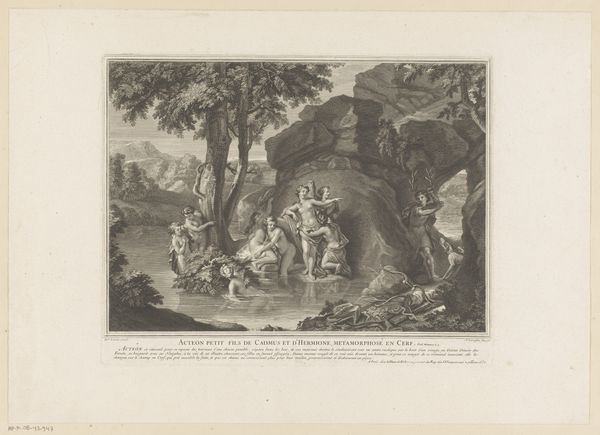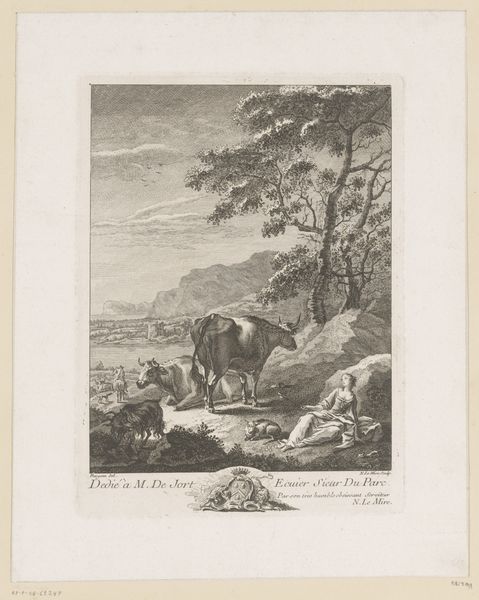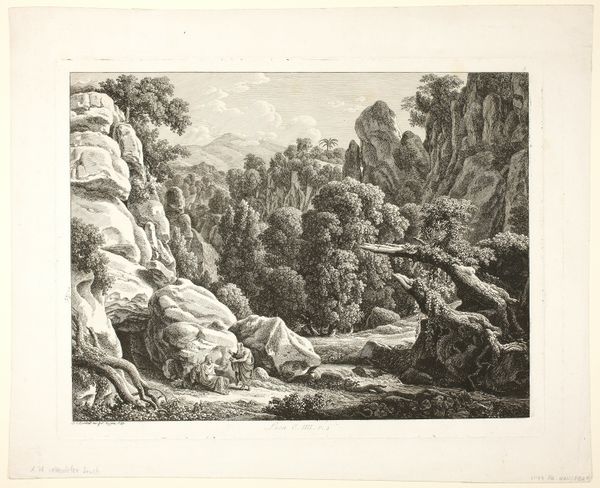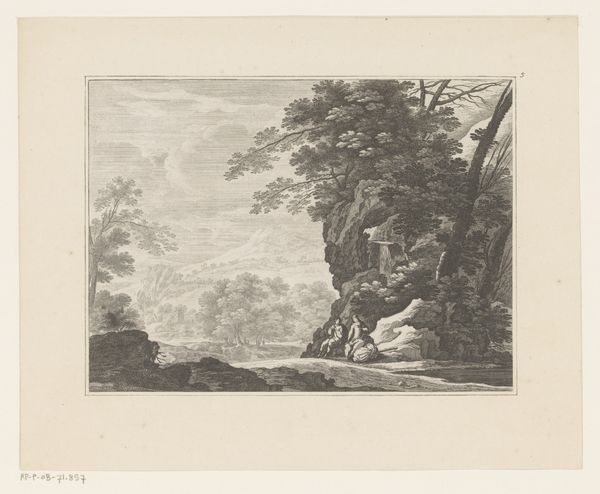
Dimensions: height 433 mm, width 345 mm
Copyright: Rijks Museum: Open Domain
Curator: This is "Rocky Landscape with Three Hermits," created between 1755 and 1763 by Quentin Pierre Chedel. It's an etching and engraving currently held here at the Rijksmuseum. Editor: My initial thought? There's a strange contrast here. The rugged landscape evokes a sense of untamed nature, yet these hermits seem utterly unperturbed by it all. Curator: The artist has chosen etching and engraving. Consider how those processes might relate to ideas of both reproducibility and unique artistry during that era. How would its affordability shape its reception among different social classes? Editor: Good point. Engravings often served a didactic or commemorative function. But there's also a romantic sensibility here – this embrace of the wild, remote landscape as a stage for contemplation. It feeds into a broader 18th-century fascination with nature, but what about these figures' isolation? Curator: Exactly. The Romantic movement pushed back against the Enlightenment and its rational views of society. Note how their robes seem somewhat coarsely rendered. Think about where and by whom the raw materials were extracted. I wonder if Chedel was attempting to comment on the actual labor needed for supposedly solitary contemplation. Editor: I think that's possible. Hermits became potent symbols for critiquing societal excesses; almost like a retreat from societal production lines. It plays on this perceived purity that becomes romanticized even though, as you point out, that 'purity' is based on exploitation of resources elsewhere. Curator: Absolutely. This artwork prompts a dialogue about Romanticism. Editor: Indeed, between nature, human construction and social criticism, this image keeps me thinking.
Comments
No comments
Be the first to comment and join the conversation on the ultimate creative platform.
